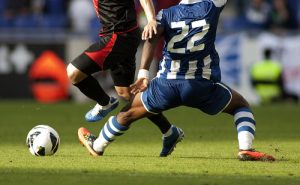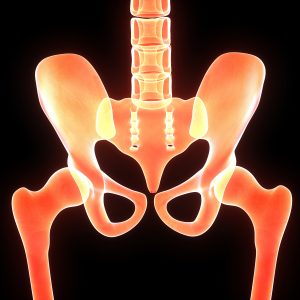When it comes to sports injuries, hamstring injuries in soccer players are very common. As a board certified sports medicine doctor, Stacie Grossfeld M.D. has treated many soccer players suffering from hamstring injuries.
According to the American Journal of Sports Medicine, hamstring injuries are the most common type of sports injury. Hamstring strains are often caused by sprinting. And once you injure your hamstring, the rate of re-injury is estimated to be over 15 percent.
If you are an athlete, educating yourself about hamstring injuries is a good idea. Follow along for facts and tips about hamstring injuries in soccer players. And keep in mind that this information could really apply to all athletes.
Nine Facts/Tips on Hamstring Injuries in Soccer Players
- Hamstring strains are the single most common sports injury in the male soccer player.
- Your hamstring is made up of three muscles/tendons: the biceps femoris, the semitendinosus and the semimembranosus.
- The most common tendon/muscle injury within your hamstring is your biceps femoris.
- Your hamstring muscles are most likely to sustain injury during explosive running accelerations and kicking activities. This is because of the high biomechanical
 demands placed on the muscle tendon unit throughout the front swing phases in running and kicking.
demands placed on the muscle tendon unit throughout the front swing phases in running and kicking. - Researchers currently think that the biceps femoris is the most commonly injured muscle in the group of your hamstring muscles/tendon because of the way it is shaped and the amount of stretch and load that occurs during the front swing kicking or running.
- Research has also proven that when the three muscle bellies: biceps femoris, semitendinosus, and semimembranosus are not capable of engaging in a synergistic adequate contraction, it may cause one of the muscles to fatigue prematurely and cause the injury to occur.
- The important risk factor for sustaining a hamstring strain injury is the presence of having a prior hamstring strain injury.
- The risk of sustaining a second hamstring injury is more than twice as high as the risk of sustaining a third hamstring injury.
- Prevention for hamstring injuries can occur through strengthening of the hamstring muscles/tendons with a weightlifting regimen.



 During pregnancy, a lot of different things happen to women’s bodies that don’t occur at any other time in their life and that men will never experience. One occurrence is that the pelvic bone alignment tends to become relaxed, and even stretchy, due to a hormone called Relaxin.
During pregnancy, a lot of different things happen to women’s bodies that don’t occur at any other time in their life and that men will never experience. One occurrence is that the pelvic bone alignment tends to become relaxed, and even stretchy, due to a hormone called Relaxin.


 Sacroiliac Joint Disease is a serious case of inflammation that affects the sacroiliac joint. In the past, the sacroiliac joint has been thought to be the cause of lower back and leg pain; however in the past three decades, that pain is now associated with herniated disks.
Sacroiliac Joint Disease is a serious case of inflammation that affects the sacroiliac joint. In the past, the sacroiliac joint has been thought to be the cause of lower back and leg pain; however in the past three decades, that pain is now associated with herniated disks. The final diagnosis is made postmortem when the brains are identified and found to have increased TAU protein and widespread neurofibrillary tangles (NFTs). In the past, CTE was called punch drunk syndrome. Doctors, such as Ann McKee, and Dr. Bennet Omalu (is most famously known for his lead role in the movie Concussion, which Will Smith was the actor representing Dr. Bennet Omalu). These doctors have suggested that CTE has a clear environmental origin. The groups have proposed that head injury, both concussive and sub-concussive, leads to neuropathic changes and the subsequent development of a series of neuropsychiatric symptoms, behavior changes, and cognitive defects.
The final diagnosis is made postmortem when the brains are identified and found to have increased TAU protein and widespread neurofibrillary tangles (NFTs). In the past, CTE was called punch drunk syndrome. Doctors, such as Ann McKee, and Dr. Bennet Omalu (is most famously known for his lead role in the movie Concussion, which Will Smith was the actor representing Dr. Bennet Omalu). These doctors have suggested that CTE has a clear environmental origin. The groups have proposed that head injury, both concussive and sub-concussive, leads to neuropathic changes and the subsequent development of a series of neuropsychiatric symptoms, behavior changes, and cognitive defects. Anterior Cruciate Ligament, often referred to as ACL injuries, are the most common knee injuries athletes suffer. While an extremely active individual could possibly suffer this type of injury, an ACL tear is most common in athletes. This is because of the stop and start movements associated with sports such as football, basketball, hockey and more. The anterior cruciate ligament is on the inside of the knee joint and supports the shin bone. The ligament, knee, and shin work together to prevent the tibia from sliding out in front of the thigh bone.
Anterior Cruciate Ligament, often referred to as ACL injuries, are the most common knee injuries athletes suffer. While an extremely active individual could possibly suffer this type of injury, an ACL tear is most common in athletes. This is because of the stop and start movements associated with sports such as football, basketball, hockey and more. The anterior cruciate ligament is on the inside of the knee joint and supports the shin bone. The ligament, knee, and shin work together to prevent the tibia from sliding out in front of the thigh bone. physicians are concerned with surgical outcomes in patients with diabetes. Several studies, papers and research has been published on diabetes and surgery. In one example, a doctor wanted to take a closer look at the effects of arthroscopic rotator cuff repair and surgery in individuals with diabetes. Here is what was published in the
physicians are concerned with surgical outcomes in patients with diabetes. Several studies, papers and research has been published on diabetes and surgery. In one example, a doctor wanted to take a closer look at the effects of arthroscopic rotator cuff repair and surgery in individuals with diabetes. Here is what was published in the
Recent Comments